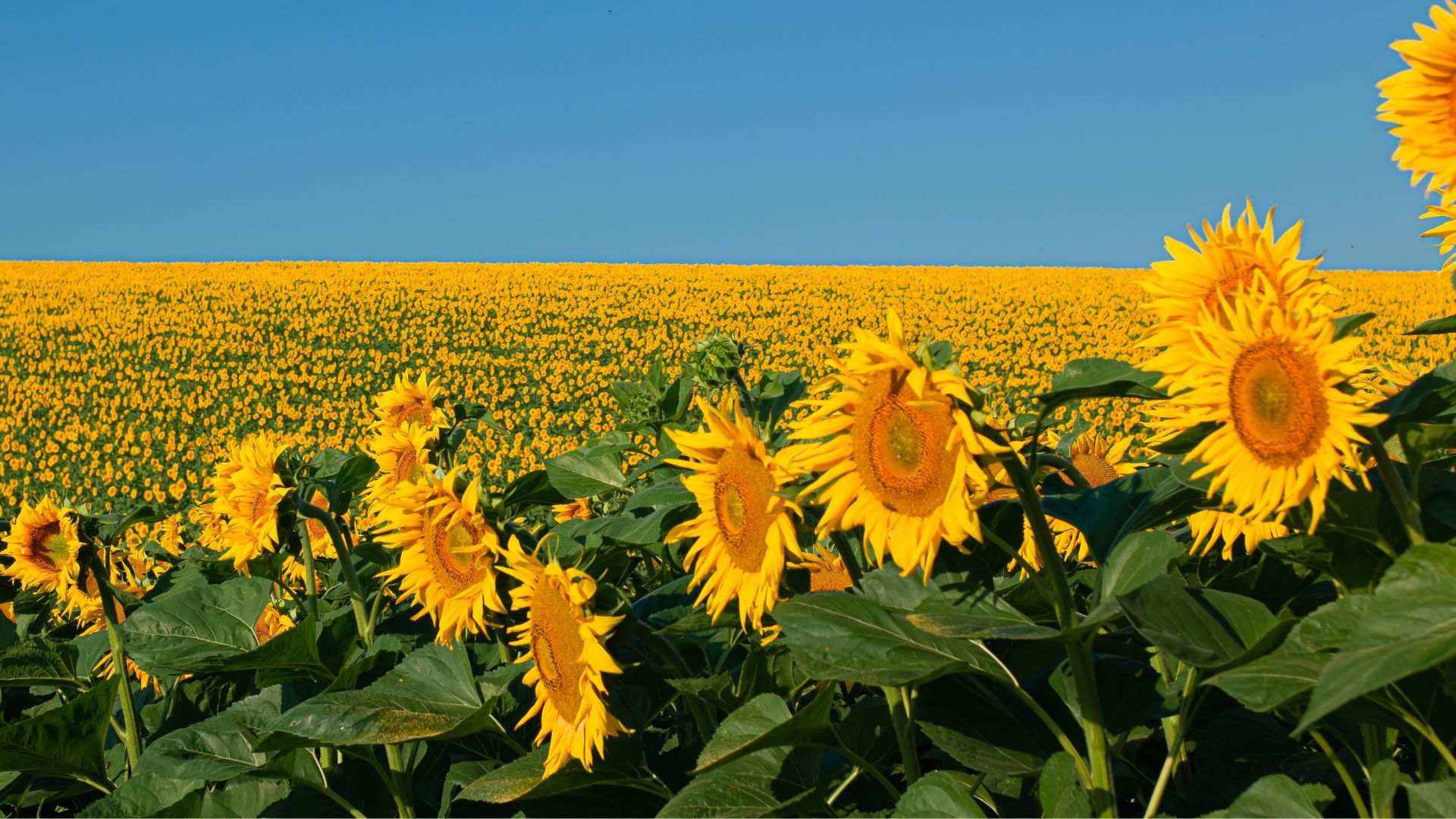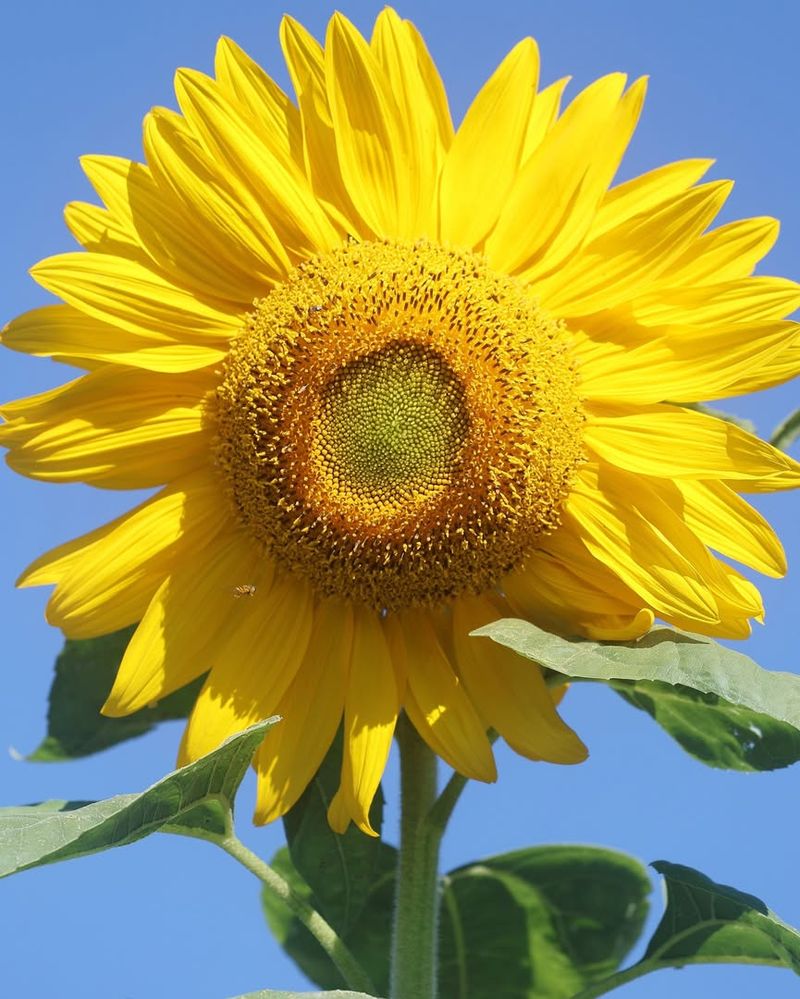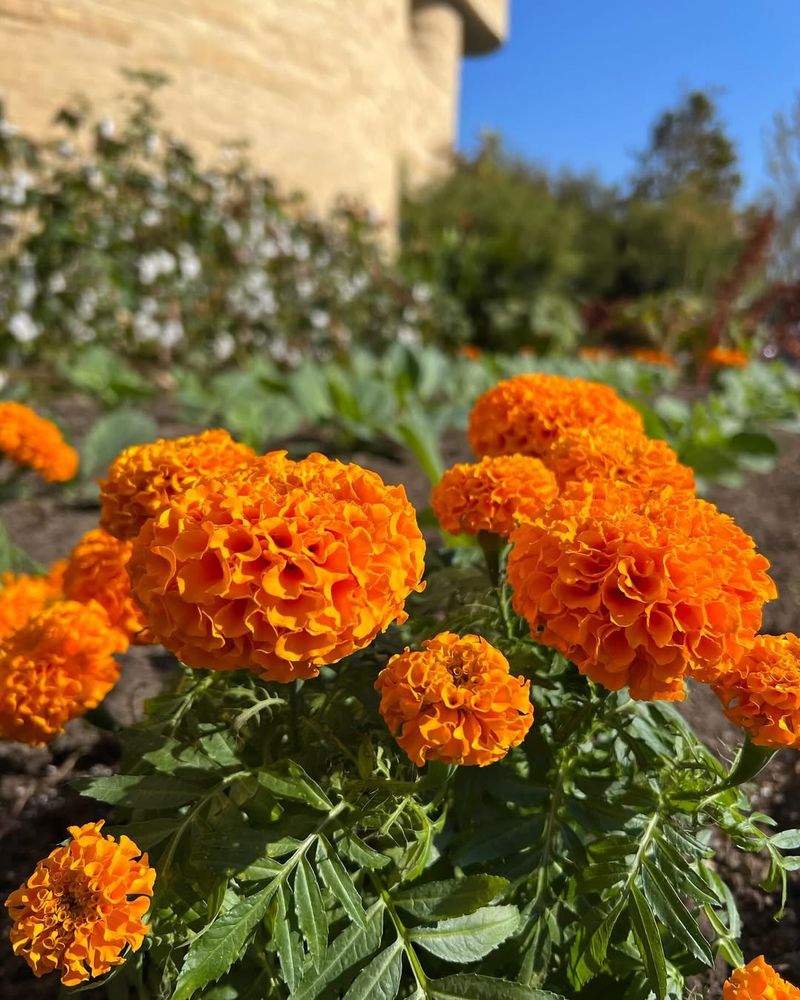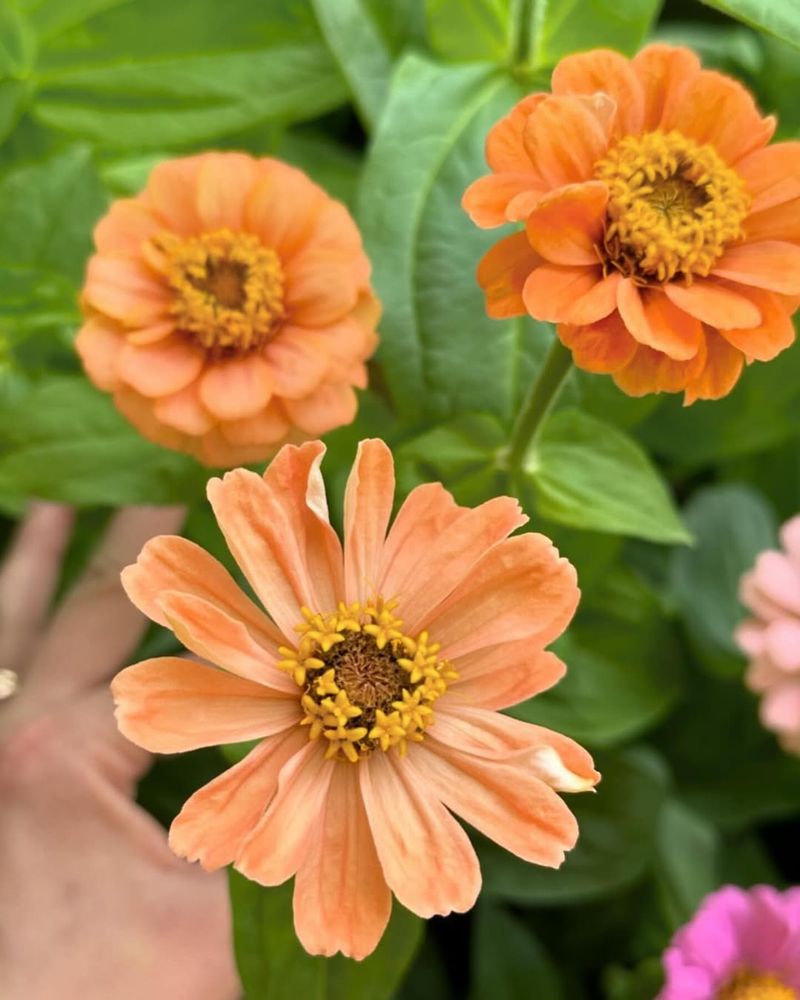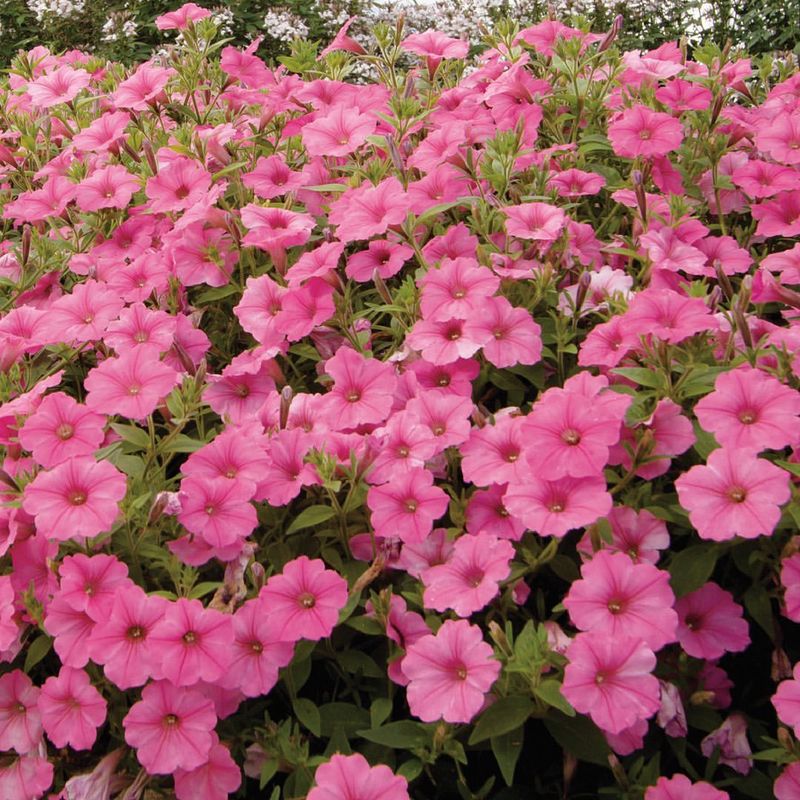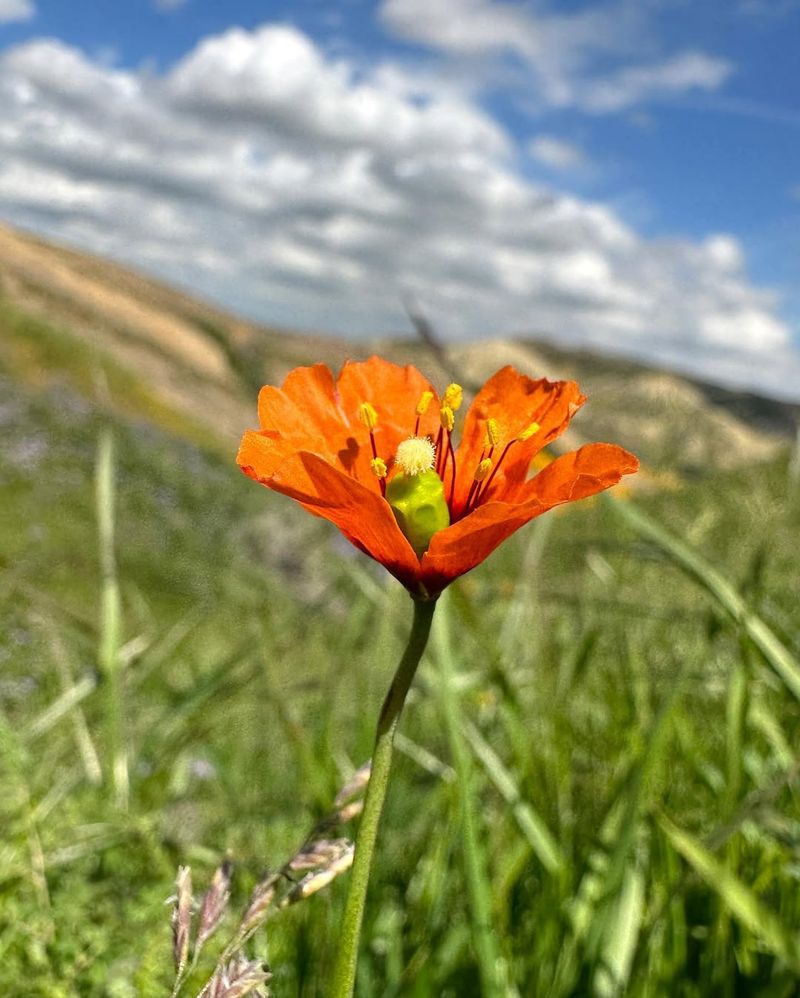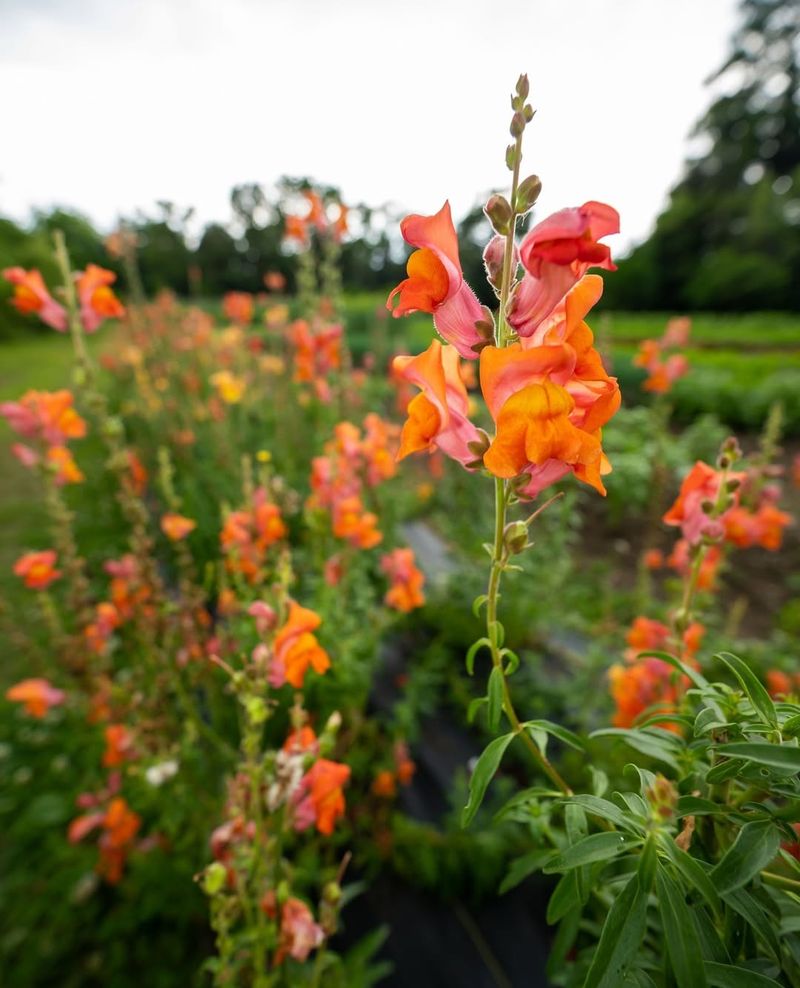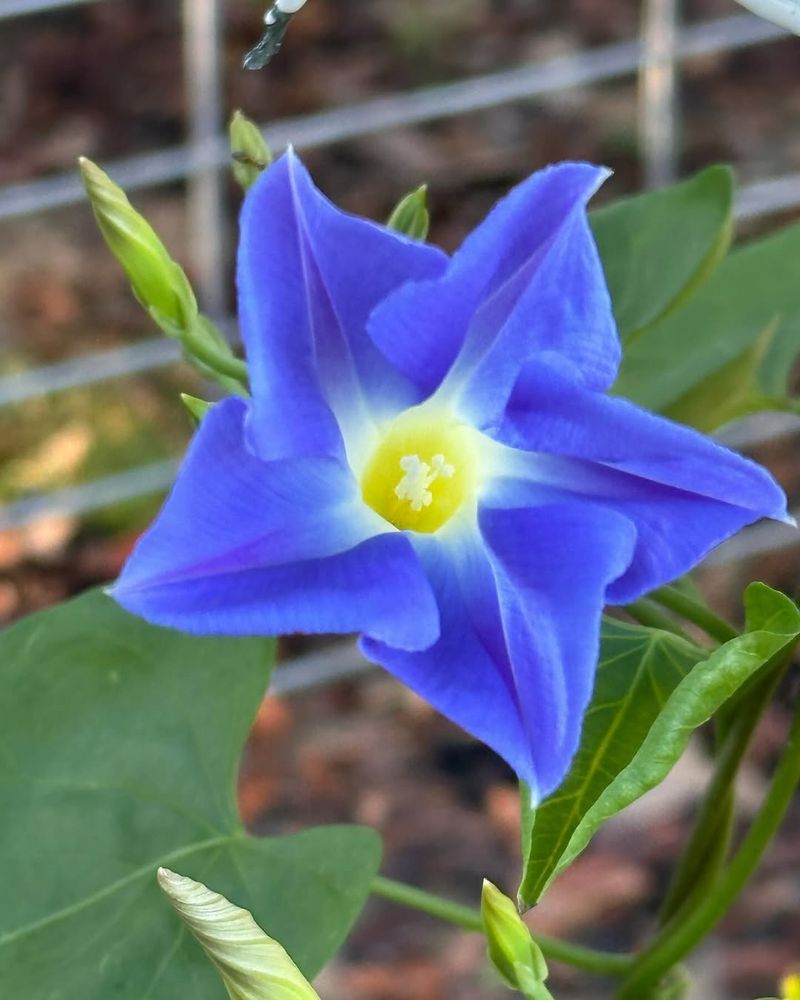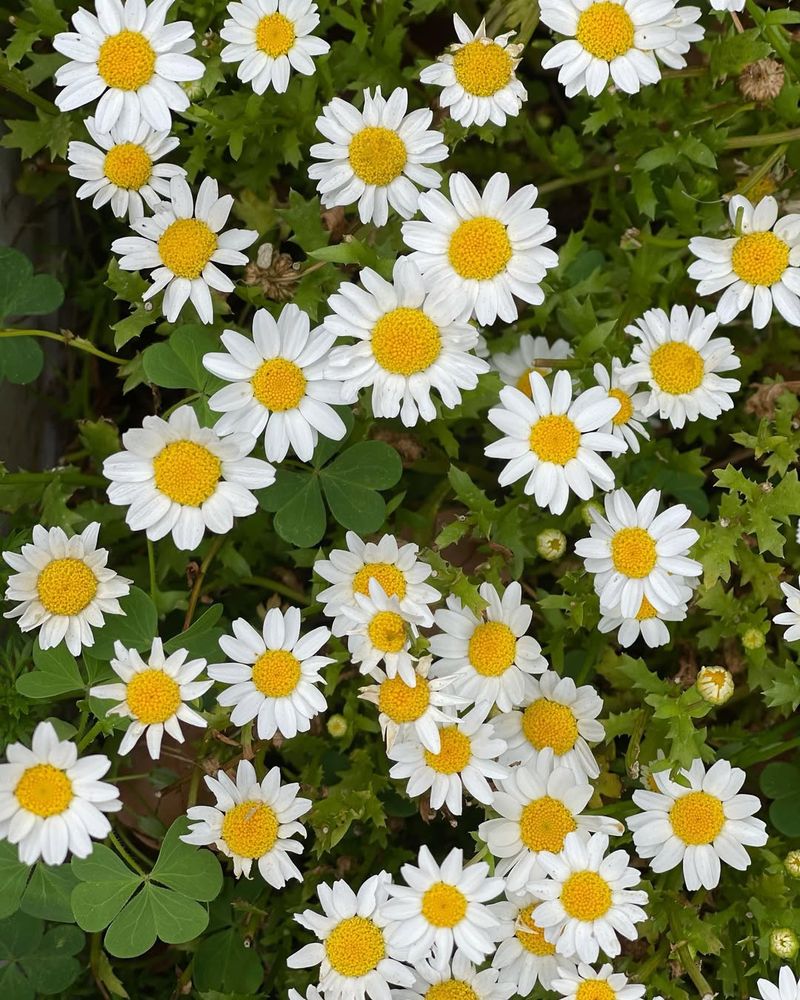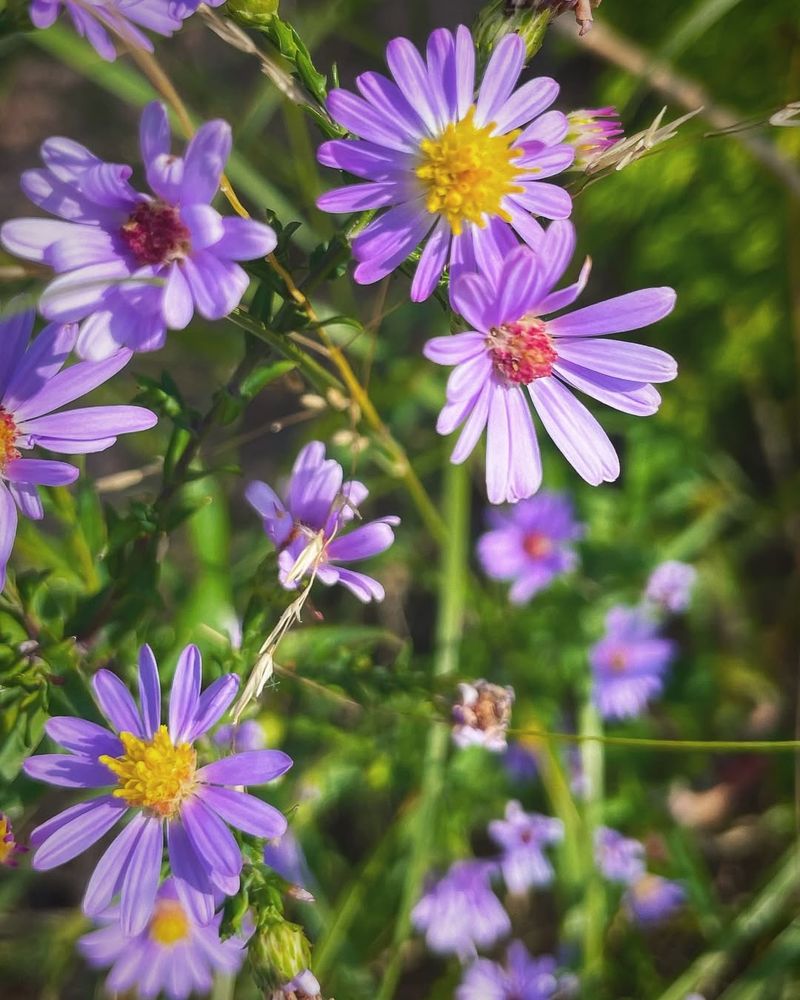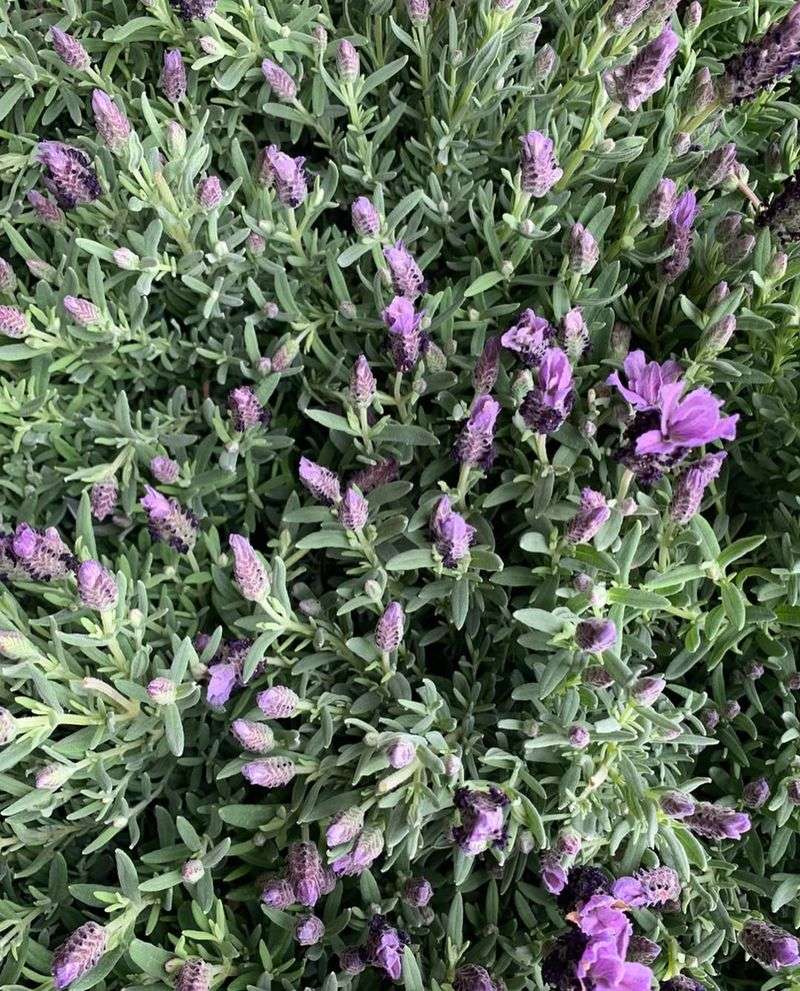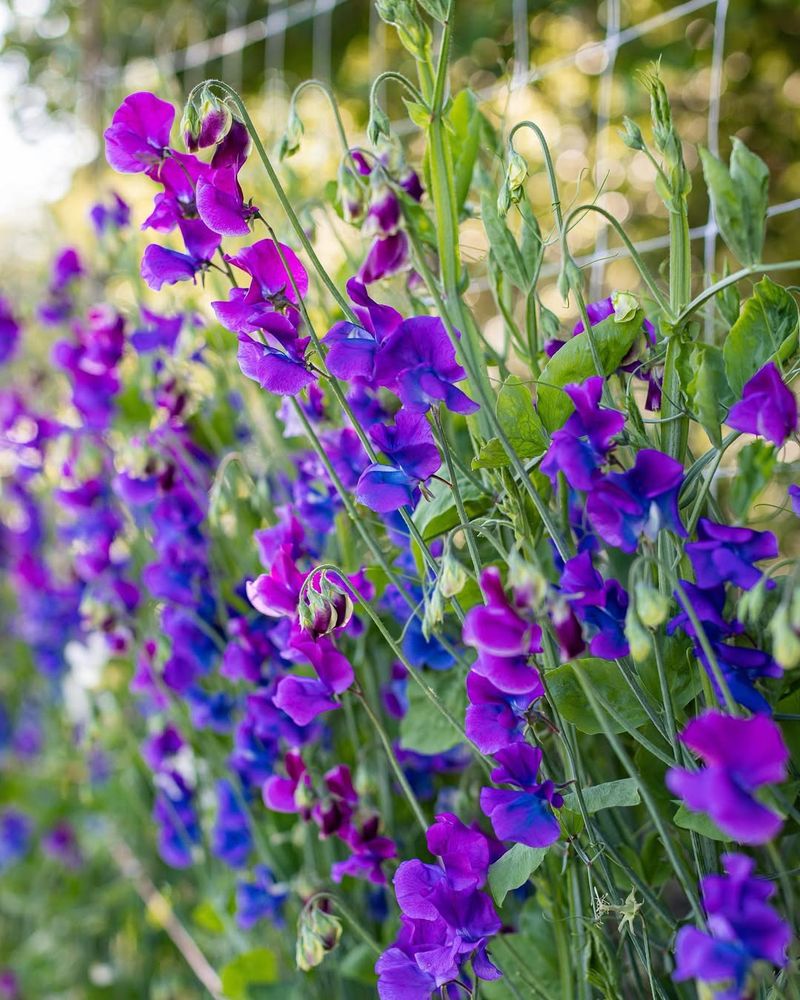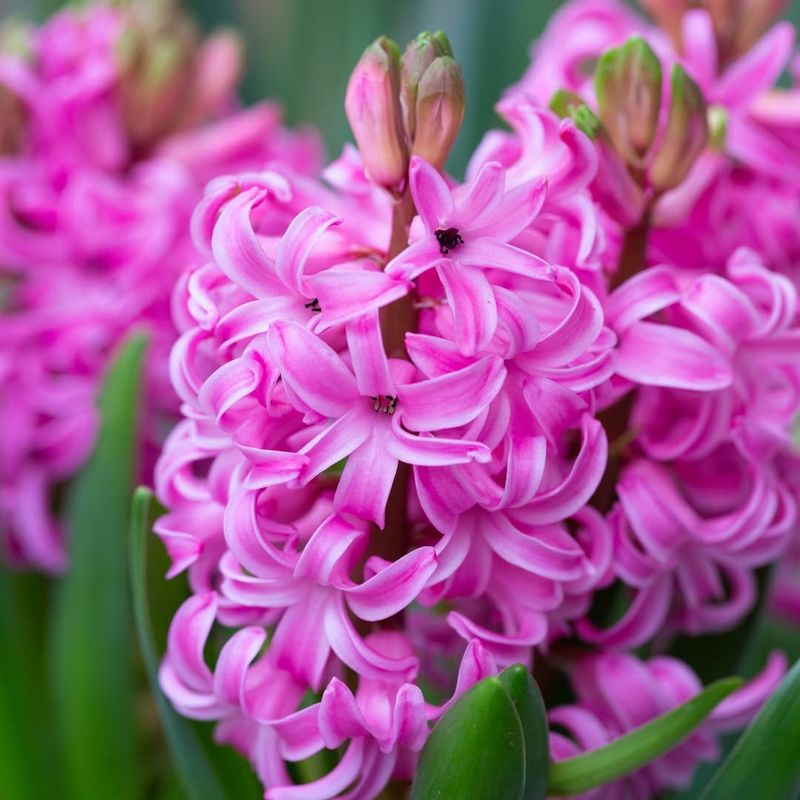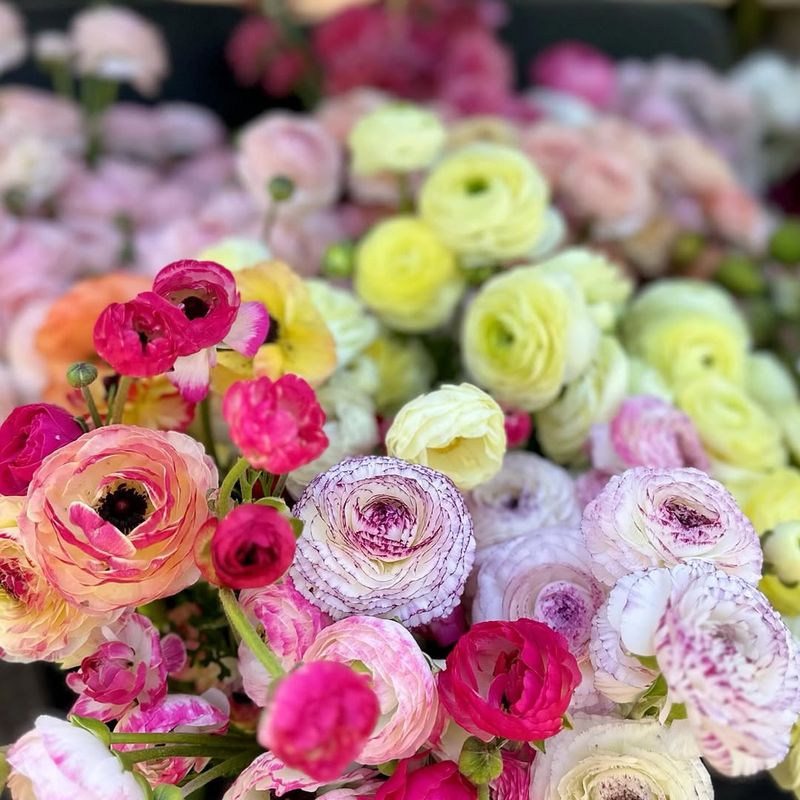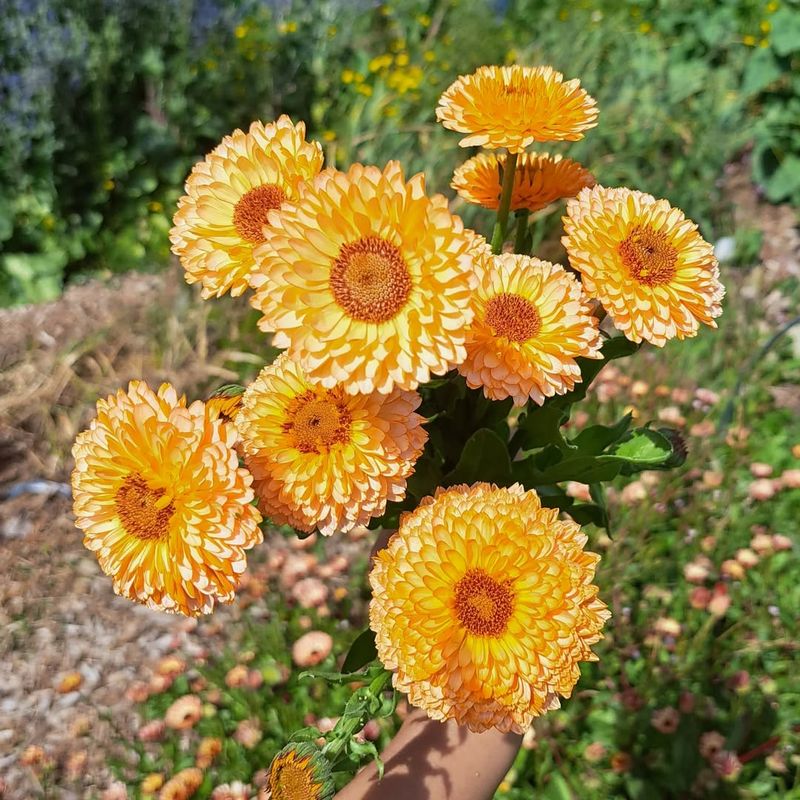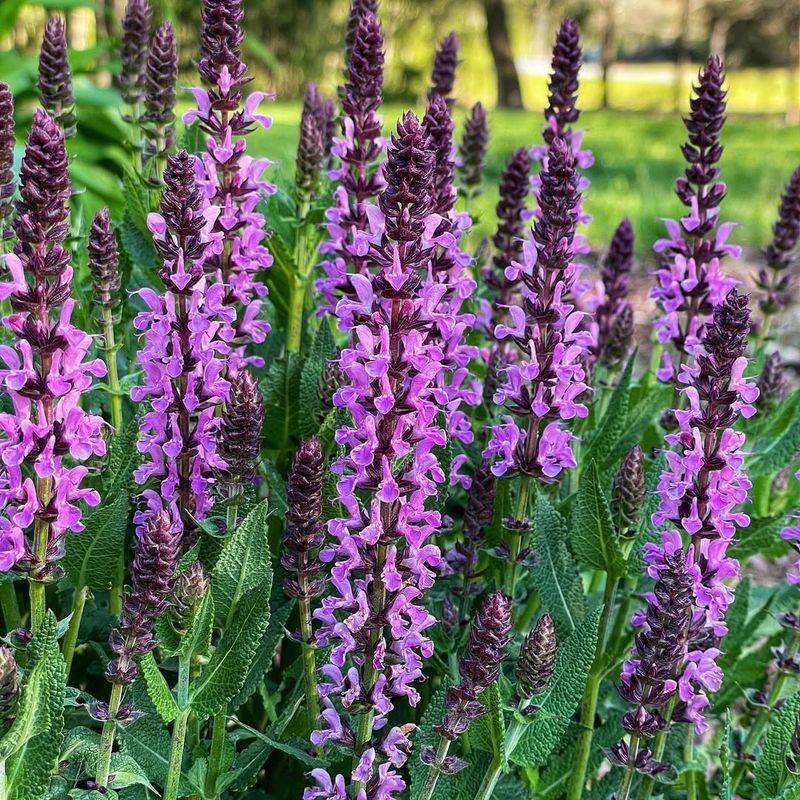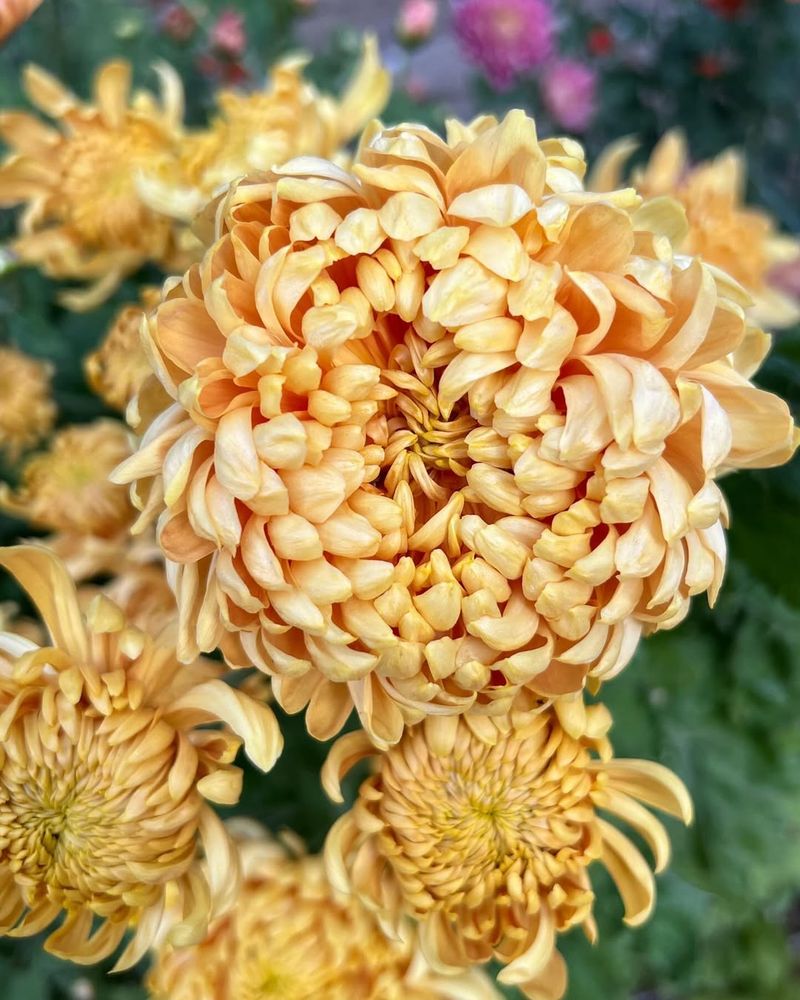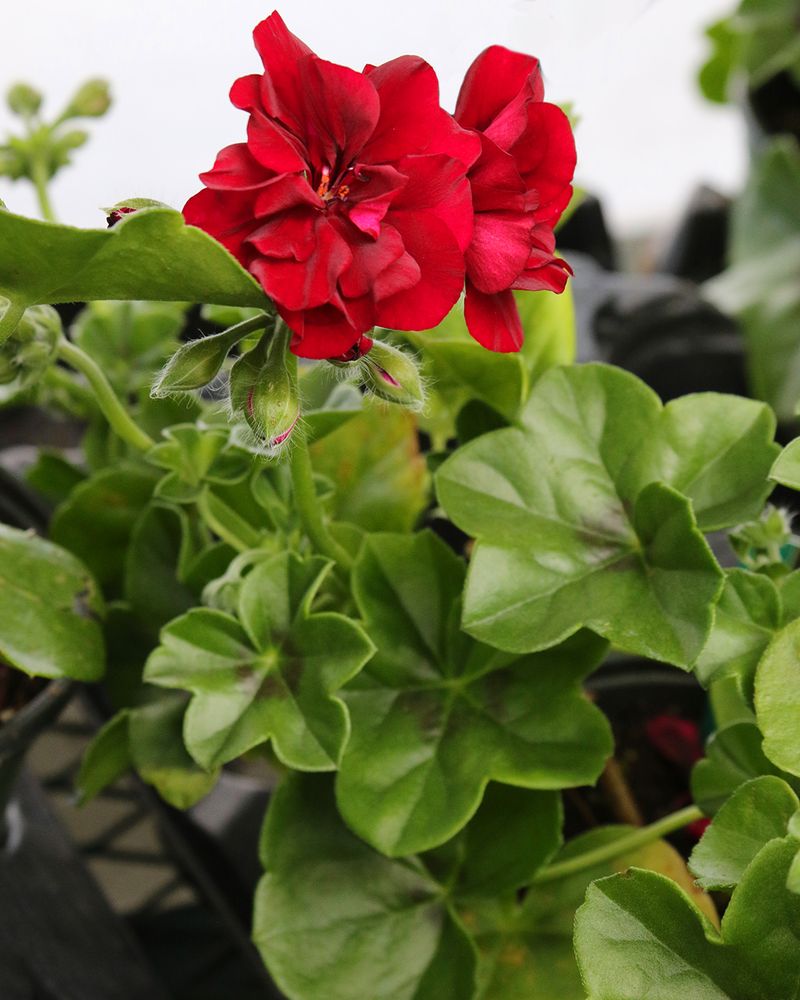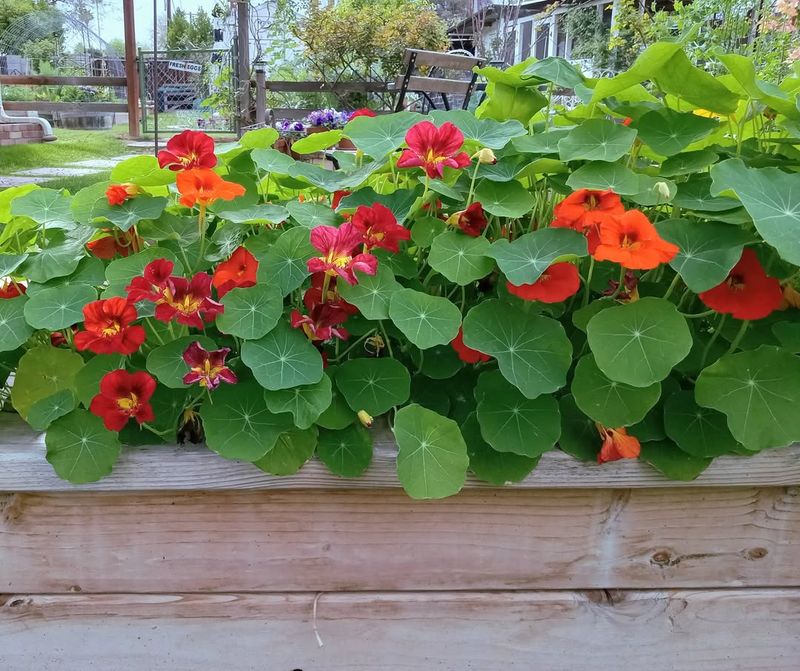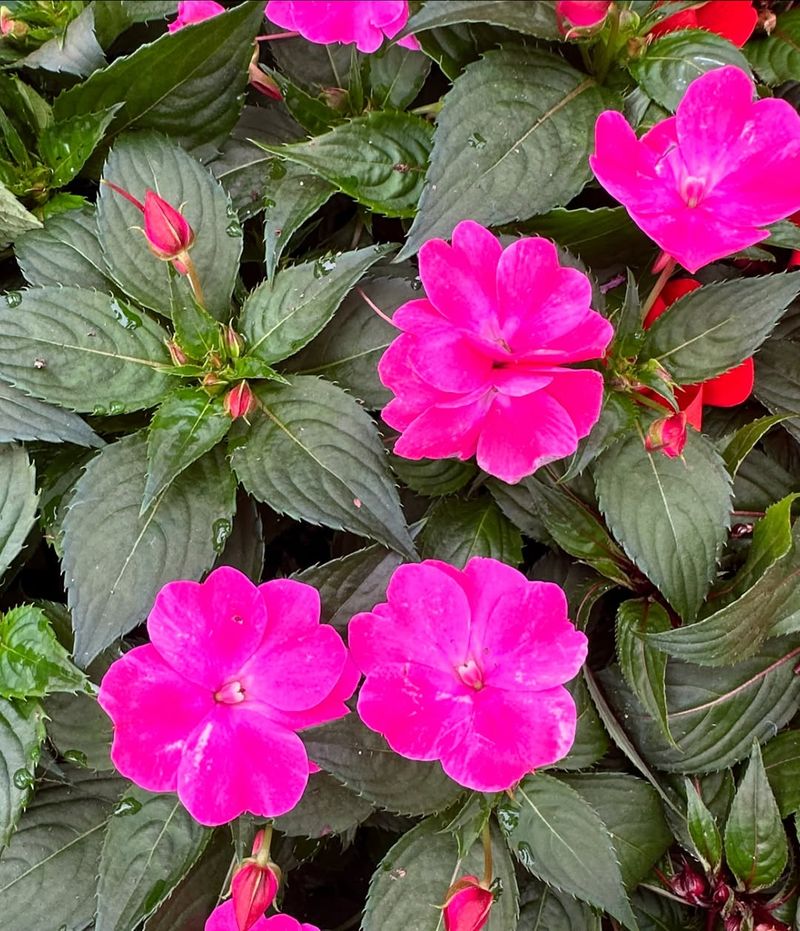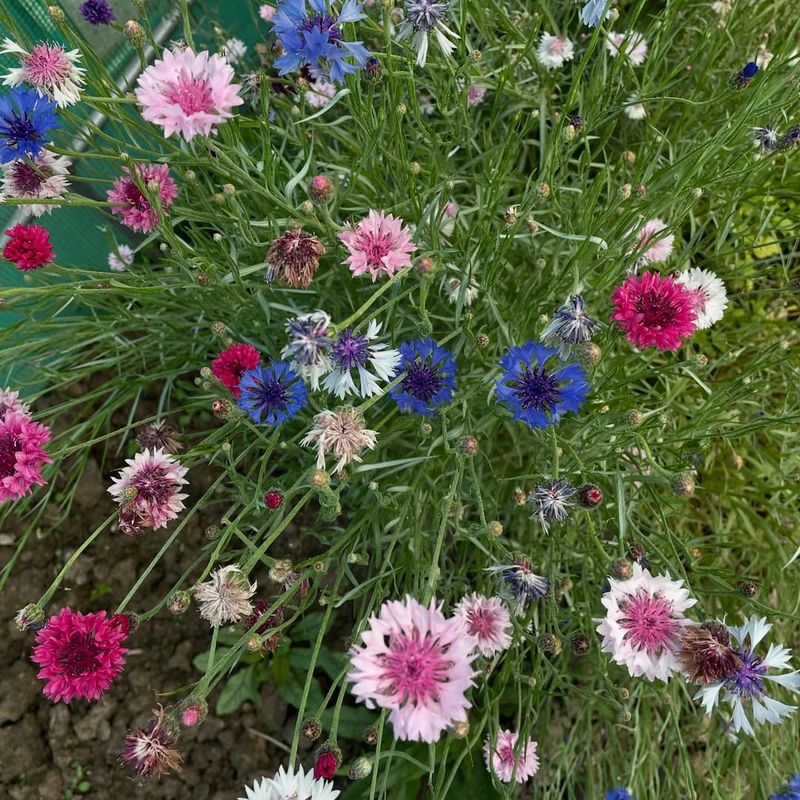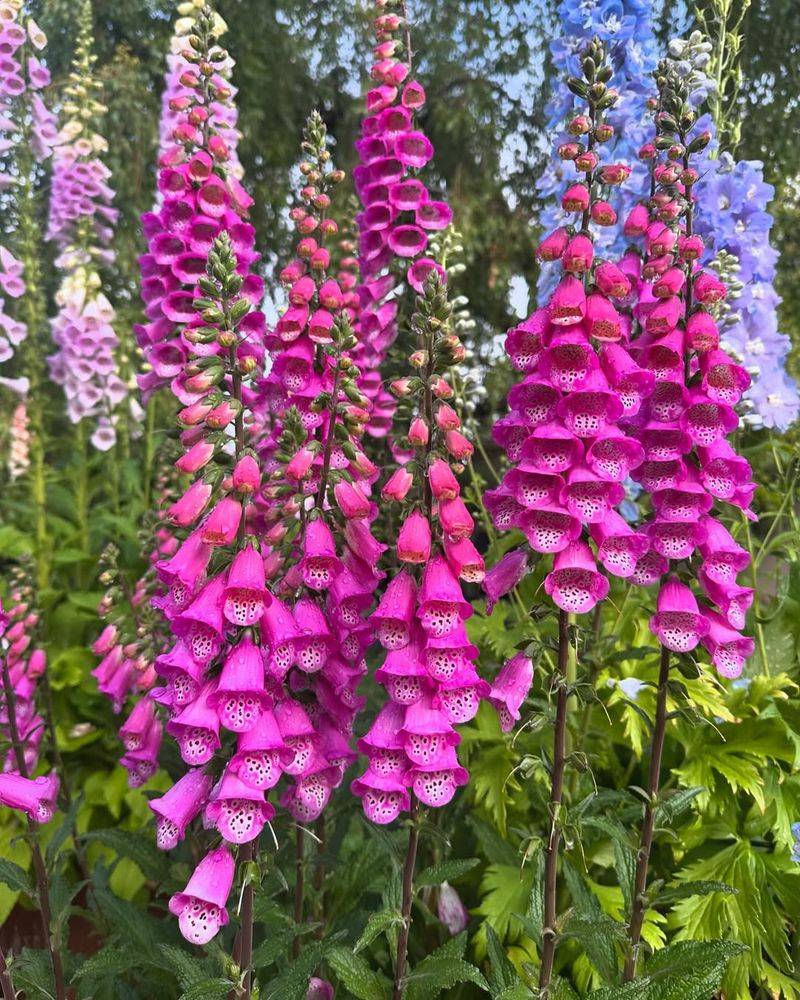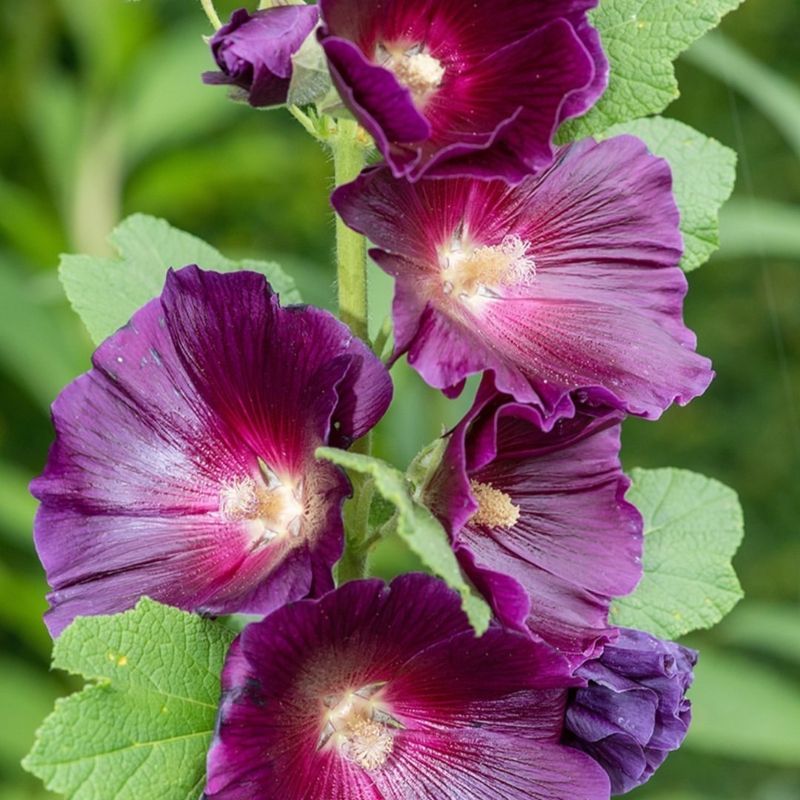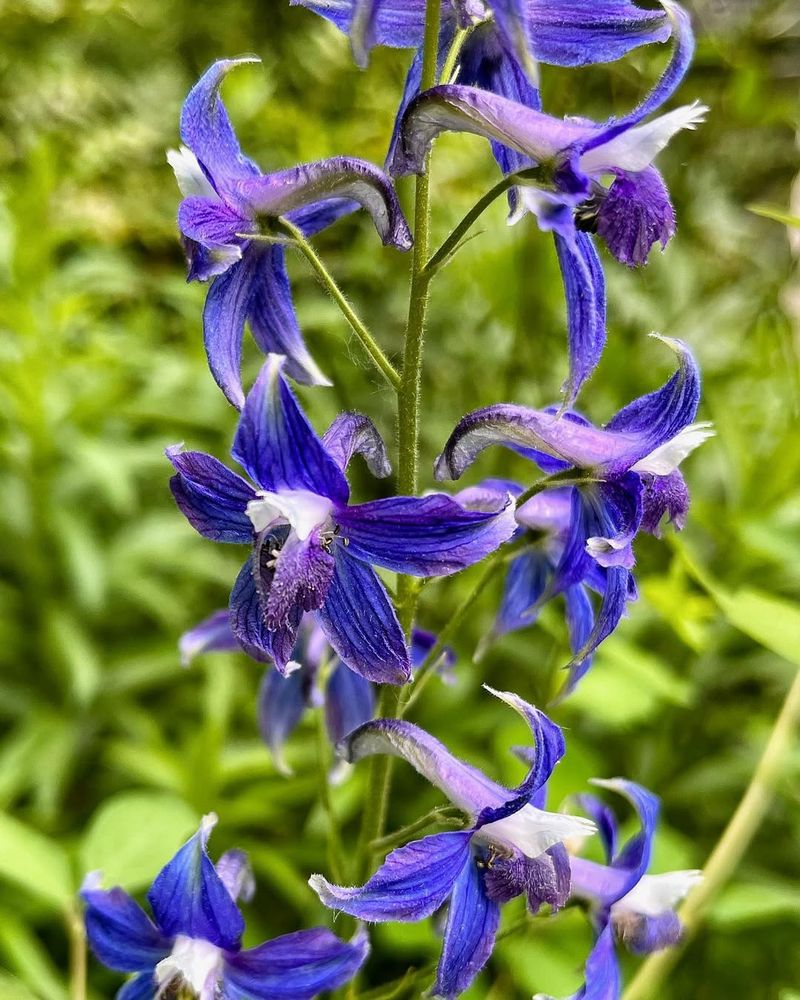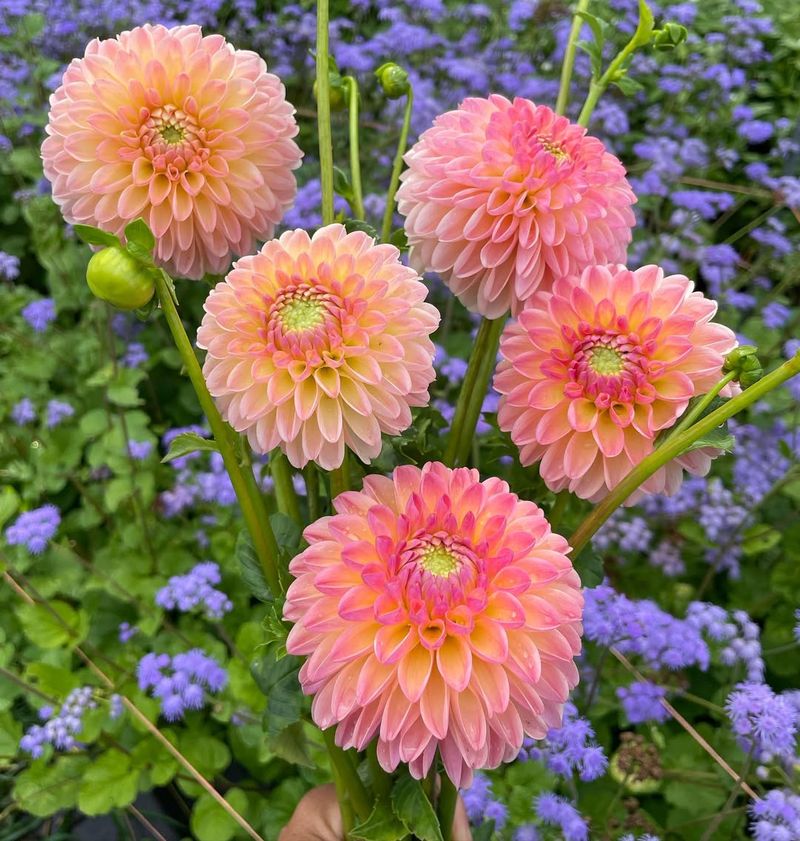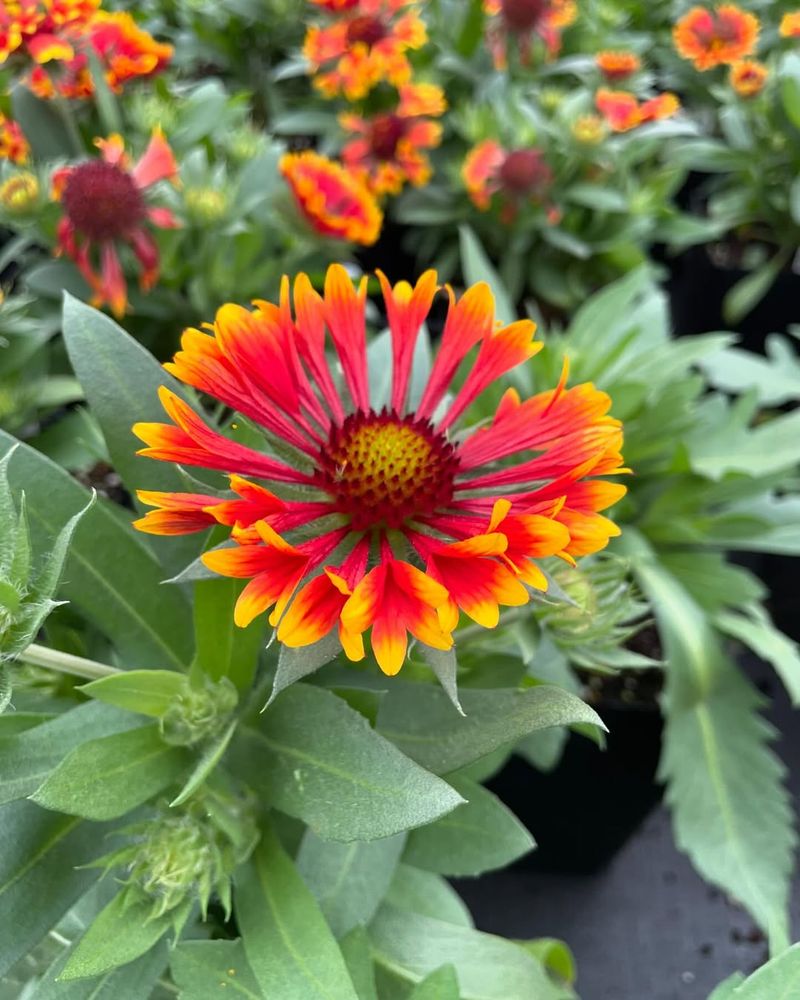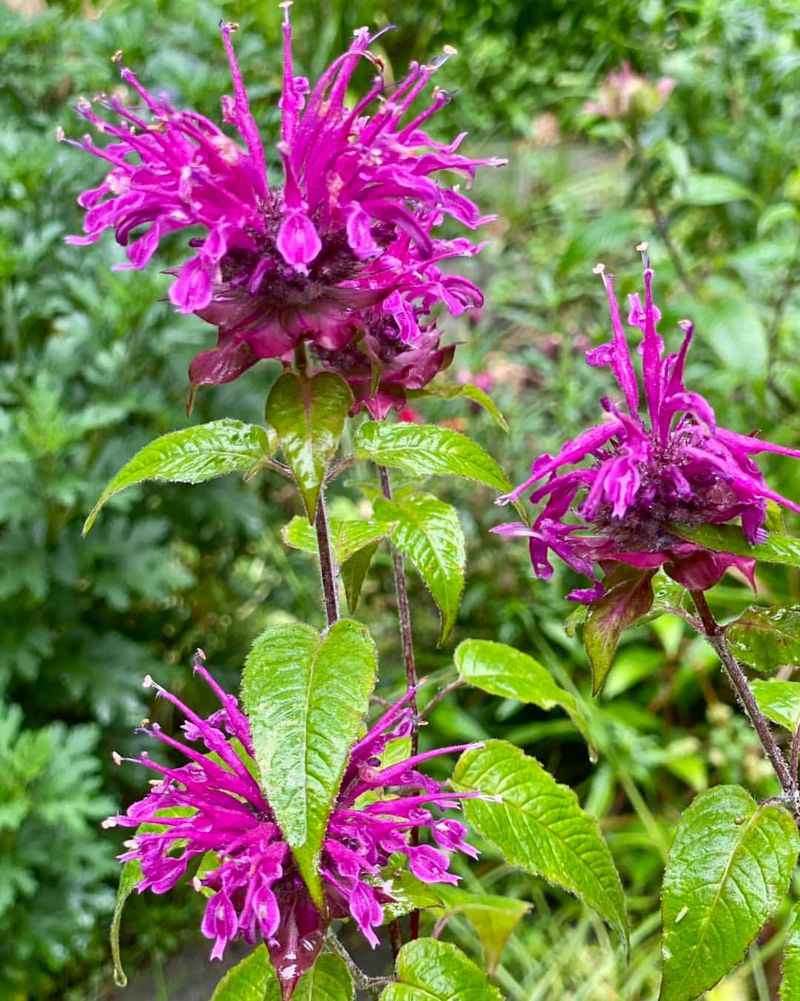Growing flowers from seeds is a rewarding way to fill your garden with color, but proper planning is key. Understanding how long each flower takes to bloom ensures a well-timed, continuous display throughout the season.
This guide breaks down 30 popular garden flowers, covering their days from seed to bloom, along with growth habits and planting tips to help you create a thriving garden with ease.
1. Sunflower
Once planted, the wait begins for these towering garden favorites to show off their bold yellow petals and dark centers. Blooming in 70 to 100 days, they thrive in bright sunlight and well-drained soil, reaching impressive heights with minimal effort.
Give them plenty of space to stretch upward, and if strong winds are a concern, staking can help keep them standing tall. Regular watering keeps them happy, making them a low-maintenance but high-impact addition to any garden.
2. Marigold
In just 45 to 50 days, these garden staples burst into bold, cheerful blooms that brighten up any space. Hardy and easy to grow, they thrive in full sun with regular watering and even help repel pests naturally.
Perfect for borders and garden beds, they keep the color coming all season long. Just deadhead the spent flowers, and they’ll keep blooming like they own the place.
3. Zinnia
A go-to for bright, long-lasting blooms, this flower takes 60 to 70 days to blossom from seed. Versatile and easy to grow, it thrives in full sun and well-drained soil, making it a favorite for flower beds and borders.
Ideal for cutting gardens, it brings vibrant color indoors and out. Regular deadheading helps extend the blooming season, keeping gardens lively for months.
4. Petunia
Bursting into flower, they bring joy to any garden. Petunias bloom approximately 70 to 90 days after planting. These popular annuals are celebrated for their wide variety of colors and patterns.
Ideal for containers and borders, petunias thrive in full sun with regular watering. Pinching back stems encourages bushier growth and more abundant blooms. Perfect for adding a pop of color to patios and balconies.
5. Lupine
Tall spikes of color begin to take shape in 60 to 75 days, making this plant a standout in any garden. With its bold vertical flower clusters, it adds height and texture while thriving in full sun to partial shade with well-drained soil.
Once established, it requires minimal upkeep and even helps improve soil health by fixing nitrogen, making it a great companion for nearby plants.
6. Poppy
The anticipation is palpable as they unfurl. Poppies typically bloom 65 to 75 days after sowing seeds. Famous for their delicate petals and vibrant colors, poppies thrive in full sun with well-drained soil.
They are easy to grow and require little care. Perfect for wildflower gardens, poppies attract pollinators and add a touch of whimsy to any landscape.
7. Snapdragon
In no time, they burst forth with color. Snapdragons bloom approximately 80 to 100 days after planting. These charming flowers are known for their dragon-like blooms that captivate gardeners and children alike.
They thrive in full to partial sun and well-drained soil. Regular deadheading extends their blooming season. Snapdragons add vertical interest to garden beds and borders.
8. Morning Glory
With rapid growth, this vigorous climbing vine reaches full bloom in about 120 days. Its trumpet-shaped flowers and heart-shaped leaves make it a favorite for adding vertical interest to gardens.
Thriving in full sun and well-drained soil, it’s perfect for covering fences and trellises. Providing sturdy support helps it climb effortlessly, while regular watering keeps it thriving and attracting pollinators all season long.
9. Daisy
A timeless garden favorite, this hardy bloomer takes 120 to 150 days to flower from seed. With classic white petals and sunny yellow centers, it thrives in full sun and even poor soil conditions.
Low maintenance and versatile, it’s perfect for borders and wildflower gardens. Regular deadheading helps extend the blooming season, keeping the garden lively with fresh flowers.
10. Aster
In the garden, they shine brightly. Asters bloom about 90 to 120 days after planting. These star-shaped flowers are beloved for their late-season color and ease of care.
They thrive in full sun and well-drained soil. Asters attract pollinators and make excellent cut flowers. Their varied colors and forms add diversity to garden borders.
11. Lavender
Their fragrance is captivating as they bloom. Lavender typically takes 90 to 200 days from seed to bloom. Renowned for its aromatic properties, lavender thrives in full sun and well-drained soil. It’s perfect for herb gardens and borders.
Once established, lavender is drought-tolerant and requires minimal care. Regular pruning encourages bushier growth and more blooms.
12. Sweet Pea
Graceful and fragrant, this climbing flower takes 90 to 120 days to bloom, filling gardens with colorful, sweetly scented blossoms. Thriving in cool climates, it grows best in full sun to partial shade with well-drained soil.
Support is essential, whether on trellises, fences, or arches, helping it reach its full potential. Regular deadheading encourages more blooms, extending the floral display throughout the season.
13. Hyacinth
Emerging with elegance and fragrance, they captivate. Hyacinths bloom around 60 to 80 days after planting. Famous for their dense, spike-like clusters of fragrant flowers, they thrive in full sun to partial shade.
Well-drained soil is essential for their success. Hyacinths are perfect for containers and garden beds. Their captivating scent and vibrant colors make them a spring favorite.
14. Ranunculus
Their layers unfold with grace. Ranunculus take about 90 to 120 days to bloom. Known for their rose-like appearance, these flowers are cherished for their vivid colors. They thrive in cool, sunny locations with well-drained soil.
Ideal for cut flowers, ranunculus add elegance to gardens and bouquets. Regular watering ensures healthy growth and abundant blooms.
15. Calendula
Fast-growing and full of color, this hardy bloomer starts flowering in 45 to 60 days. Known for its medicinal benefits and bright, cheerful petals, it thrives in full sun and well-drained soil.
Easy to grow and low-maintenance, it’s a great choice for flower beds and borders. Regular deadheading keeps the blooms coming, ensuring a vibrant display all season long.
16. Coneflower
Their presence is striking as they stand tall. Coneflowers bloom approximately 120 to 150 days from seed. Known for their daisy-like appearance with raised centers, these flowers thrive in full sun and well-drained soil.
Their drought-tolerant nature makes them a low-maintenance choice. Coneflowers attract pollinators and are perfect for perennial borders and wildlife gardens.
17. Salvia
Bold spikes of color soon grace the garden. Salvia blooms about 75 to 90 days after planting. These showy flowers are loved for their long blooming period and ability to attract pollinators. They thrive in full sun and well-drained soil.
Drought-tolerant and easy to care for, salvias are ideal for borders and containers. Regular deadheading promotes more blooms.
18. Chrysanthemum
With a burst of hues, they announce their arrival. Chrysanthemums bloom approximately 120 to 150 days from seed. These autumn favorites are known for their diverse colors and forms. They thrive in full sun and well-drained soil.
Chrysanthemums are perfect for fall gardens and cut flowers. Regular pinching helps develop bushier plants and abundant blooms.
19. Geranium
Their blooms bring cheer to any space. Geraniums typically bloom 90 to 120 days after planting. Valued for their vibrant colors and adaptability, geraniums thrive in full sun to partial shade.
They prefer well-drained soil and regular watering. Ideal for containers and borders, they require minimal maintenance. Pinching back stems encourages bushier growth and more flowers.
20. Nasturtium
Their bright colors are hard to miss. Nasturtiums bloom approximately 50 to 60 days from seed. Known for their edible flowers and peppery leaves, nasturtiums thrive in full sun and well-drained soil.
They are easy to grow and require little care. Perfect for borders and containers, they add a burst of color to gardens and salads. Regular watering ensures healthy growth.
21. Impatiens
With shade, they flourish beautifully. Impatiens generally bloom 70 to 85 days after planting. These popular shade-loving flowers are perfect for adding color to darker garden areas.
They thrive in partial to full shade with well-drained soil. Regular watering and feeding keep them blooming. Impatiens are ideal for containers and garden beds, offering continuous color throughout the season.
22. Cornflower
With their vivid blue blooms, these flowers start appearing 60 to 90 days after seeding, bringing a pop of color to any garden. Easy to grow and low-maintenance, they thrive in full sun and well-drained soil, making them perfect for wildflower gardens.
Loved by pollinators, they also make excellent cut flowers, adding charm both outdoors and in bouquets.
23. Foxglove
With tall, striking flower spikes, this plant begins blooming in 150 to 180 days, creating a dramatic focal point in any garden.
Thriving in partial shade and well-drained soil, it’s a low-maintenance choice once established. Adding height and elegance to flower beds, it also attracts bees and butterflies, making it a favorite among pollinators.
24. Hollyhock
Elegant spikes reach for the sky. Hollyhocks bloom about 120 to 150 days after planting. Known for their tall spires of colorful flowers, hollyhocks thrive in full sun and well-drained soil. They are perfect for cottage gardens and borders.
Regular watering and support keep them growing tall and strong. Hollyhocks add a touch of old-fashioned charm to any garden.
25. Larkspur
Tall, colorful, and a little wild, this flower brings serious charm to any garden. Blooming in 80 to 90 days, it thrives in full sun and well-drained soil, making it a great fit for cottage gardens and wildflower meadows.
With its graceful, spiky blooms, it adds height and texture to flower beds. Keep the flowers coming with regular deadheading, and enjoy the effortless beauty all season long.
26. Sweet Alyssum
Their scent is unforgettable. Sweet alyssum blooms approximately 45 to 60 days after planting. These low-growing plants are known for their sweet fragrance and small, delicate flowers.
They thrive in full sun to partial shade with well-drained soil. Perfect for borders and containers, sweet alyssum adds a soft touch and sweet scent to gardens.
27. Verbena
A visual delight in any garden, this plant produces clusters of colorful blooms that last for months. Blooming 60 to 80 days from seed, it thrives in full sun and well-drained soil, making it perfect for containers and borders.
Regular deadheading helps maintain continuous flowering, while its nectar-rich blossoms attract butterflies, bringing even more life to the garden.
28. Dahlia
Their blooms are truly spectacular. Dahlias bloom approximately 120 to 150 days after planting. These tuberous plants are celebrated for their wide range of colors and forms.
They thrive in full sun with well-drained soil. Dahlias require regular watering and feeding for best results. They make excellent cut flowers, adding beauty to both gardens and bouquets.
29. Gaillardia
Warm and inviting, this perennial features daisy-like blooms in rich shades of red, orange, and yellow, bringing color to any garden. Blooming 90 to 100 days from seed, it thrives in full sun and tolerates drought well.
Ideal for borders and rock gardens, it requires little maintenance, and regular deadheading helps extend the blooming season.
30. Bee Balm
Eye-catching and pollinator-friendly, this perennial produces tubular blooms that draw in bees, butterflies, and hummingbirds. Flowering in 100 to 120 days, it thrives in full sun to partial shade with well-drained soil.
A great choice for pollinator gardens and borders, it benefits from regular pruning to promote healthier growth and abundant blooms.

